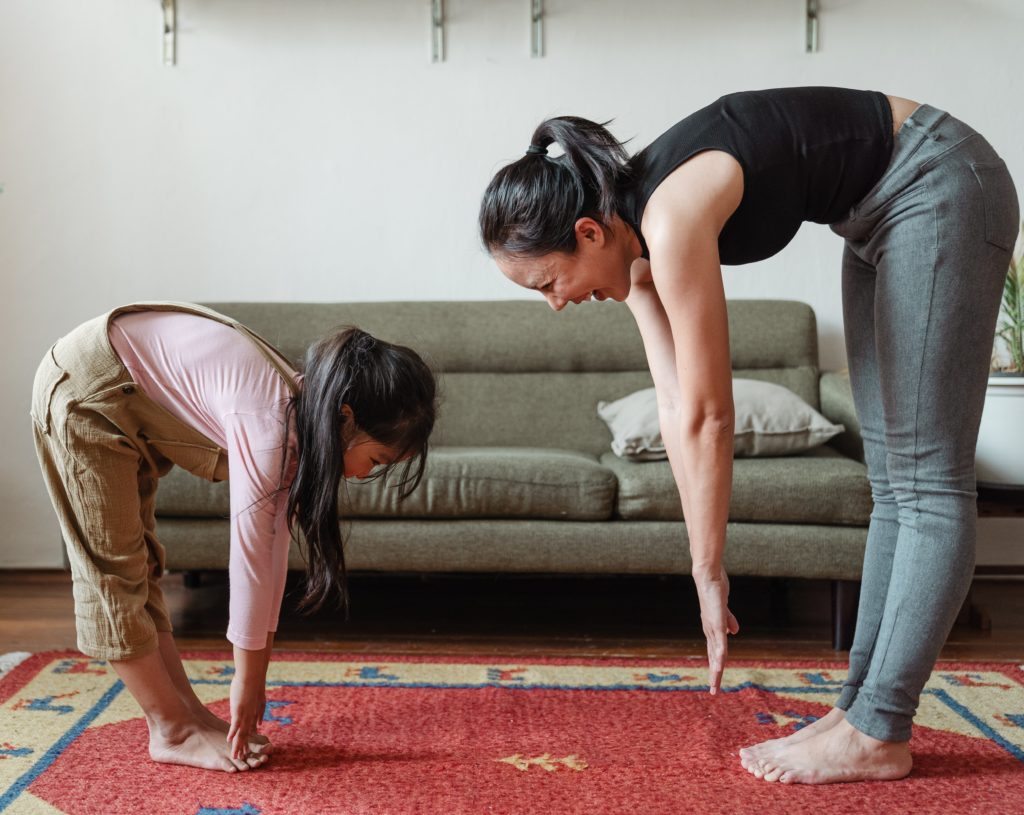
Everyone knows that regular exercise is wise and eating healthy is important. Yet, we’re all busy and barely maintaining work-life balance as it is. Changing our ways to improve our health can seem insurmountable. Adding one more thing to the to do list provides an immediate negative reaction, especially when it never gets checked off. I know this first-hand, because I have put off prioritizing fitness for the past eight years, beginning when I had my first child. My regular exercise routine until very recently consisted of running to the car while holding two kids and their backpacks.
What changed? On my birthday a year ago, I decided I was going to move my body a mile every day, whether it be walking, running or crawling. I pulled out my old running log from my successful (back-of-the-pack) years of running in my 20s and added a new entry for each day. My latest streak lasted about 10 days. Without fail, whenever I penciled in exercise time, my family would need something from me: help with piano, teeth brushing, a snack emergency or cleaning up the latest spill. Add in immediate requests from all the other adults in my life, whether at home or at work.
Ten days!!! That’s it – and it nearly broke me. Pathetic. I can run a mile in ten minutes, which means there’s only ten minutes standing between success and failure.
My strategy needed to change. So I quit. I turned to researching habits to find out why I must lack discipline. I’ve been down this road before, and I always come to the same conclusion every time. I must not have enough time and energy to do it all. Though, there’s a little known phenomenon that when you have more energy to tap into, you gain more time, increasing your total capacity. This can be achieved with regular exercise. Hmmm. Even though I’ve learned this before, my brain tells me that when I work out, it makes me tired afterwards. If I don’t have energy to begin with, then won’t I have even less? We are conditioned to believe that work out = tired, even though that’s not true. It’s counterintuitive.

What was missing was motivation. I was feeling perpetually defeated by my lack of meeting my stated daily goals. Luckily, I did not have to look too far for inspiration- I studied the habits of my seven-year-old. Through the encouragement of her Type-A Dad, she has built habits to play piano, practice Japanese, and walk 7,000 steps daily. The growth has been amazing to watch over time. As an example, within a year, she moved from very little Japanese comprehension to having the ability to read a moderately challenging children’s book. She is very proud of her constant growth playing the piano, which keeps her going. Though she hates to walk 7,000 steps, she has learned that if she does it right away when she gets home from school, she won’t be trying to cram it those last steps right before bedtime. So what is motivating her? Daily streak counts! She loves counting the consecutive days of practice, seeing the progress, and she gets rewards periodically, including the ability to watch TV.
Reflecting on the differences between our situations, I was also missing permission to carve out time for myself. When I close my laptop at the end of the work day, that feeling of “if you have time to lean, you have time to clean” washes over me, and I turn to tidying up. Since working out was a “new” part of my routine, it had not yet become socially acceptable to leave cleaning for later. There’s always more to clean, so why not give yourself permission to take care of yourself? Like you would take care of a child. Because you have a body to take care of too. And you’re just as worthy as anyone else to live a happy, healthy life. While I was still contemplating my one-mile per day failure, I started small. Simple nightly walks down our street in the summer and fall to support on my daughter’s 7,000 step per day quest. My daughter’s step count habit was imprinted in my brain because as a parent you are supposed to make sure your kids do what they are supposed to. When bedtime would approach, I used to say, “Please brush your teeth, put on your pajamas, and did you get your steps in?” After a while, I didn’t have to say that part as much because it had become a habit.
When winter hit, I really started missing those outdoor walks. My daughter turned to the treadmill. I started to feel icky, and even if I liked being outdoors in the cold, there was no daylight after work, even if I wanted to return to nightly walks. I decided to start my own indoors exercise regimen. Within four months I logged 100 workouts.
With anything, if you do a little every day, it adds up. And once you form those daily habits, you then have a foundation to build on and make incremental improvements. My 100 workouts include a mix of 10-, 15- and 20-minute sessions which increased over time. I’m continuing to build more minutes each day and types of activities as I continue. With this experimentation, and the success I was building on, I realized daily should be the goal, with an allowance here and there for missing a day, if absolutely necessary. My husband is a very accomplished athlete, and he has always said, you will be successful if you treat working out like taking a shower. After many years together, I finally realized he was right. Don’t tell him I said that though!
